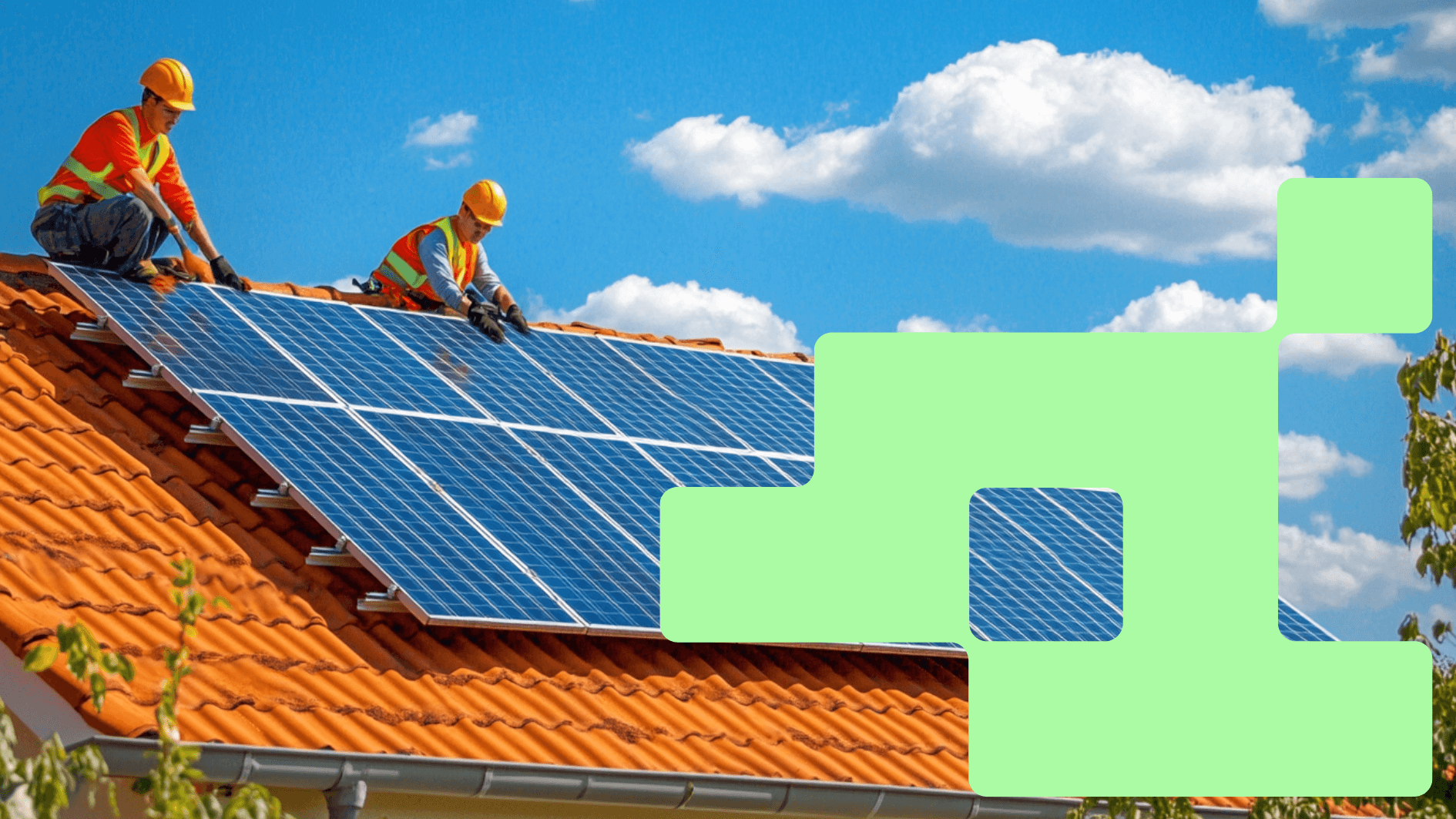Solar feed-in tariffs climb 18% in six months
The fees for Dutch solar panel owners who feed electricity back to the grid increased. In this episode of Behind the Figures, we explore what this means.
Published on October 30, 2024

Mauro swapped Sardinia for Eindhoven and has been an IO+ editor for 3 years. As a GREEN+ expert, he covers the energy transition with data-driven stories.
With 1,044 watts installed per person, the Netherlands has the world's highest amount of photovoltaic (PV) watts per capita. While this certainly means that Dutchies can produce and consume more green power, this also means that the electricity market and its rules are rapidly evolving.
According to a recent analysis by the comparison website Overstappen.nl, the average cost of feed-in tariffs for Dutch solar power owners soared by an average of 18% in 6 months. The website examined the changes in the fees consumers pay for the energy they do not consume and thus return to the grid.

About Behind the Figures
In Behind the Figures, we examine one figure in every episode. Using charts and graphs, we break down the figures and provide context to help you make more sense of them.
Every energy provider has its own rules on feed-in tariffs. Some, such as the popular Essent and Energiedirect, calculate them based on feed-in brackets—the more you feed in, the more you pay. Others, such as Eneco, pay a fixed cost per kWh. Providers like Vattenfall do not charge fees if less than 500 kWh is fed back in a year.
The analysis focuses on three examples of electricity fed into the grid annually: a household feeding back 2,100 kWh, 3,600 kWh, and 5,100 kWh to the grid. Overall, those feeding more kilowatts are those most impacted, with a cost increase of up to 23% more.
Feed more, pay more
Going more in-depth, Overstappen.nl also presented detailed figures for each energy company imposing feed-in surcharges to show price variations between March and October. While tariffs stayed untouched for some providers, they dramatically increased for others, as shown in the graphs below, which refer to the three scenarios analyzed.
The third scenario shows the highest increases, with Coolblue Energie's yearly feed-in tariffs rising by 187%—from €240 to €690. Innova and Gewoon Energie experienced an identical cost increase of 97% – from €551 to €1087. In the second scenario, United Consumers’ tariffs saw the highest hike (81%). In the case of the consumer feeding back 2100 kWh, the steepest price rise was Mega’s (+67%).
Varying monthly costs
The energy price comparison site Energievergelijk.nl also allows users to compare the price of feeding-back tariffs through its calculator. This tool, which considers how energy companies calculate their feed-in tariffs, allows us to compare monthly costs. Taking the identical amounts of electricity fed by the three households as examples, we ranked the different energy providers by their monthly feed-in costs.
Overall, Eneco and Oxxio are the two providers charging the higher fees, as they top the rank of both the first and second scenarios. In the 5,100 kWh example, United Consumers greatly exceeds their tariffs.
How did we get here?
As more and more Dutch households installed PV systems, households produce more electricity. Usually, solar panel owners do not self-consume all the electricity they produce. They feed excess power into the grid if they cannot store it. As a result, the hours with negative electricity prices are also soaring, with energy companies setting feed-in tariffs in the past few months to compensate for the costs incurred.
In the past few years, the number of household-installed solar panels in the Netherlands has skyrocketed. The Dutch Statistics Institute (CBS) counted around 650 MW of installed capacity in 2013; ten years later, over 23 GW of capacity was installed—10 of them in Dutch houses.
This growth has been fuelled by the drop in PV cost and the net metering scheme (salderingsregeling). This law states that companies must deduct from the electricity bills the amount of electricity that users feed back into the grid. As a result, consumers pay for the difference between what they consume and what they feed back. Theoretically, one might even pay nothing if one produces more electricity than one consumes.
What is next?
In recent months, the former minister for climate and energy, Rob Jetten, has proposed phasing out this law, given that this measure costs €700 million a year in tax losses. In February, the Senate voted to keep the scheme.
The coalition government led by Dick Schoof immediately made clear that it wanted to scrap the measure as of January 2027. This proposal is way earlier than the previous cabinet, which proposed a gradual phase-out until 2031. In December, the parliament will vote on the plan, and the majority of representatives in both houses will likely back it.
Phasing out the net metering scheme will increase energy costs since offsetting between energy produced and consumed will no longer apply. New technologies and tools are coming to help solar panel owners control their assets to curb the expenses of feeding electricity to the grid. Smart controllers and PV yield predictors are two examples.
If last years saw a boom in Dutch solar panels, forecasts predict a similar rise in house battery installations. Already today, most of the batteries in the country are for home use. According to a recent report by Dutch New Energy Research, by 2026, 10,1 GWh of battery capacity will be installed in the Netherlands. Over half of this capacity will be in the residential sector, allowing solar panel owners to stash excess power.
